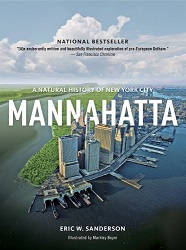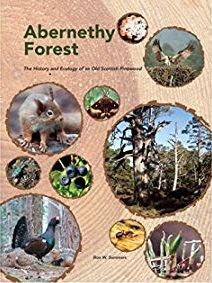
What did the island of Manhattan look like on that day, just over 400 years ago (1609) when it was “discovered” by Henry Hudson? Very different from today. It was a rich place with forests, streams, wetlands, and even some hills. Wildlife was abundant, with nearly 400 species of vertebrates likely and another 200 possible. Vascular plant species may have numbered nearly 1,200.
It was also the home to the Lenape people who gave the island its name: Mannahatta. Eric Sanderson headed a decade-long project to try to describe the likely nature of the island before the arrival of Europeans. That project is described in
Mannahatta: A Natural History of New York City (2009). He claims that if found today, the island would likely be designated as a national park, but instead, “extraordinary cultural diversity has replaced extraordinary biodiversity.”

Ron Summers writes about a very different ecological history in
Abernethy Forest: The History and Ecology of an Old Scottish Pinewood (2018). This is an effort to understand and protect a barely surviving old ecosystem, mostly destroyed by centuries of human activities. This small subject, about 38 square kilometers, or just a bit bigger than Mercer Island, includes the fast-flowing River Spey and Loch Garten, which at 47 hectares is about half the size of Green Lake.
While small, Abernethy includes “the largest of the remaining fragments of the pine forest that once extended across Highland Scotland” and is “incredibly rare in Britain and therefore precious for nature conservation and science.” It is also beautiful, as I have discovered over several visits in the last 20 years, and supports some fascinating animals, including the Capercaillie (the largest member of the grouse family), three species of crossbills that are well-suited for extracting the seeds of pinecones, and the Scottish wildcat, described as resembling a robust domestic tabby.
To put these two books in perspective, check out (two lending copies in the Miller Library)
The Flora of Seattle in 1850, a master’s thesis by Raymond Larson (2005). Like Mannahatta, this study is set just before settlement by Europeans. The focus is on the existing plant species, and Larson explains that these can only be understood in the context of the significant variety of ecological neighborhoods. “The landscapes of Seattle in 1850 were not static. While most of the city consisted of coniferous forest in various stages of succession, the sheer range of conditions was surprising.”